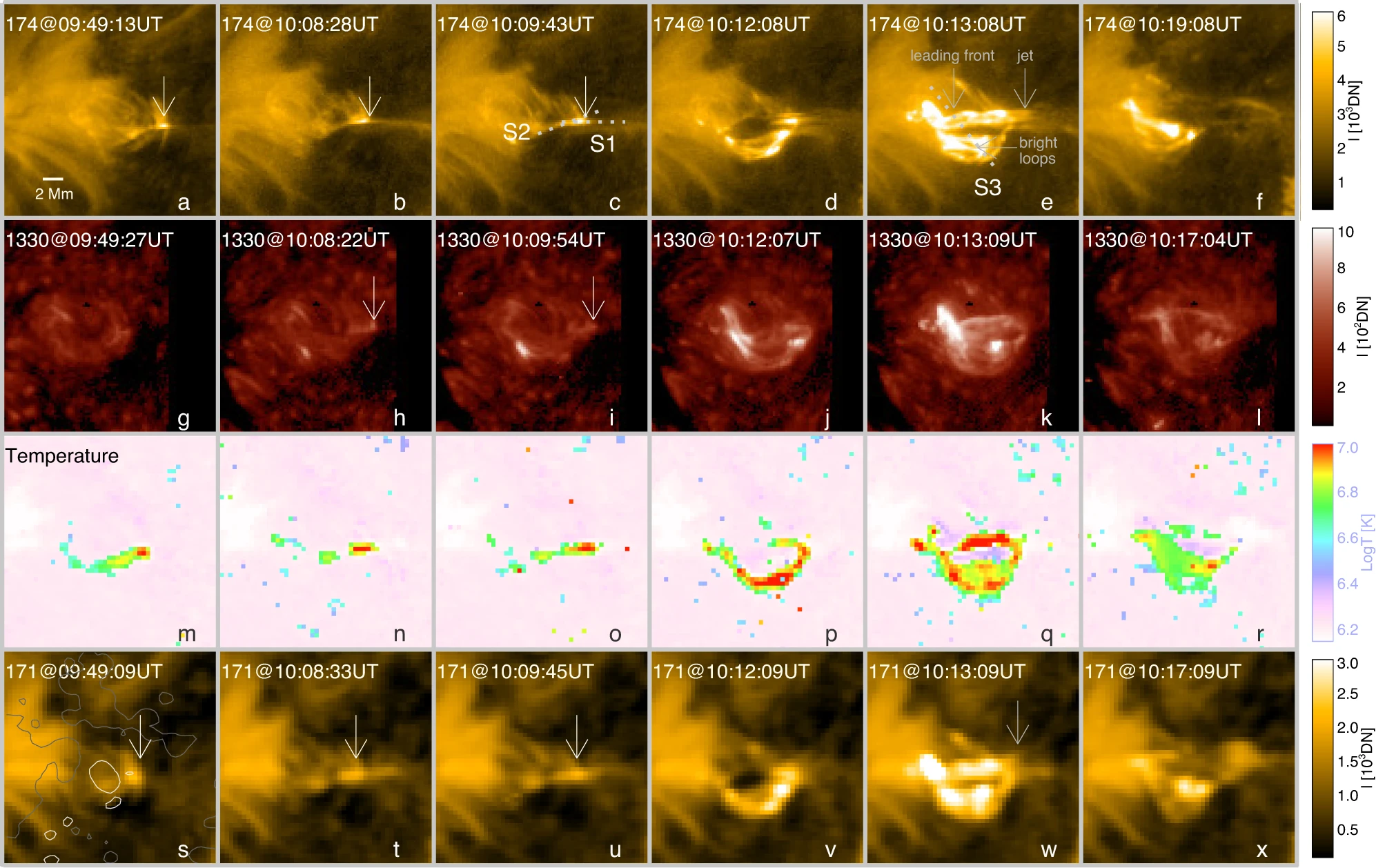Big explosions on the sun involve eruptions of light or mass, and are called either ‘solar flares’ or ‘coronal mass ejections’. Both types of eruptions are caused by magnetic reconnection, a sort of short circuit between the magnetic loops in the outer solar atmosphere, which is called the corona. In this process, mass is accelerated and light escapes, thereby leaving the magnetic loops in a more stable configuration. Solar flares and coronal mass ejections are the largest releases of energy in the solar system, they are like the elephants in the zoo of coronal dynamics.
On March 3 2023, the EUI telescope on Solar Orbiter was able to catch the miniature version of such flares and mass ejections. Thanks to sharp and fast imaging of the EUI telescope, researchers could observe magnetic reconnection taking place repeatedly on very small scales (see picture below). As compared to the gigantic ‘elephant’ eruptions, the observed mini-explosion is like a mouse in the zoo of coronal dynamics.

The picture is a time sequence of restructuring of magnetic loops. The spatial scale is very small compared to observations of elephant eruptions.
The elephants and the mice are a representation of what scientists call ‘scale invariance’: you see the same things whether you are looking at large or small size, be it mammals in the zoo or magnetic reconnection in the solar atmosphere.
We suspect that the tiny mini-explosions continuously pump heat into the solar environment and atmosphere. This scientific insight could help us to understand why the solar corona is at several million degrees, while the solar surface is ‘only’ at a few thousands degrees. These observations were published in the prestigious journal Nature Communication.
More on the ESA website





